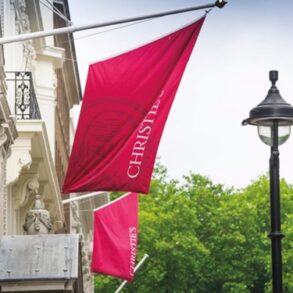By Marie-Elena Schembri | Solving Sacramento
Selling art in Sacramento looks different than it used to. For veteran artist Tony Natsoulas, whose ceramic sculptures are in permanent collections at 18 different museums, including SFMOMA, the traditional market doesn’t hold the promise it used to, particularly in his hometown of Sacramento.
He is instead connecting with his fans and collectors in a more direct way, building up a personal connection. “I’ve got a nice fat mailing list, and I have a newsletter and I have an open studio twice a year and I sell through that,” said Natsoulas, who studied under famed funk artist and UC Davis professor Robert Arneson.
Sacramento’s art scene is a dynamic ecosystem, constantly adapting to economic shifts and social trends. At the heart of this evolution lies the art gallery — and while Sacramento has plenty of independent art spaces, museums and galleries, Sacramento’s commercial art galleries can be counted on one hand; not by the handfuls like other California cities with strong creative economies.
The question arises: Where do people buy art in Sacramento, and is it working?
The commercial gallery model
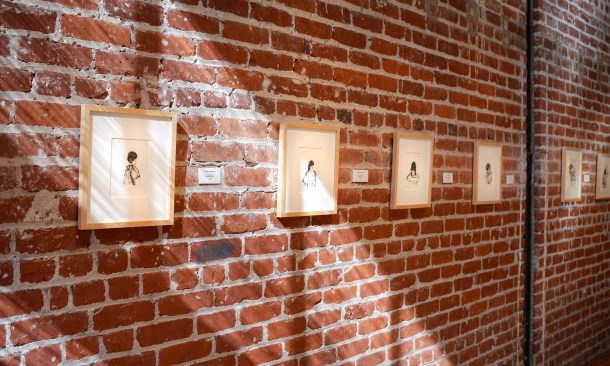
One of the longest-standing commercial art galleries in Sacramento is b. sakata garo, owned and operated by Barry Sakata in Midtown for the last 27 years. Sakata says he has maintained success through relationships and his reputation for having quality artists. His gallery is a holdout from the traditional art gallery model. He carefully curates artists from Sacramento and beyond to show in his gallery, hosts opening and Second Saturday receptions and promotes them through handmade fliers that he mails to patrons.
Sakata reports that while he still has a dedicated host of collectors, people are spending less on art than they used to, which he thinks is partly due to the uncertainty caused by the current political landscape. B sakata garo was one of a handful of galleries awarded grants of $10,000 from the City of Sacramento’s Creative Venues Grant in 2024-25, designed to aid and support the creative industries that were heavily impacted by the pandemic. Because he owns his building, where he also resides some of the time in a loft studio above, he is able to maintain the gallery despite a decline in the number of patrons in recent years
For oil painter Patricia Altschul, who recently sold five of her paintings during a month-long exhibition at b. sakata garo, the closure of nearby galleries has had an impact on the public’s interest in traditions likeSecond Saturdays, which have drawn thousands to Midtown for art walks and creative events over the last 30 years. Since 2023, Midtown Association has made a focused effort to revive the once-booming event.
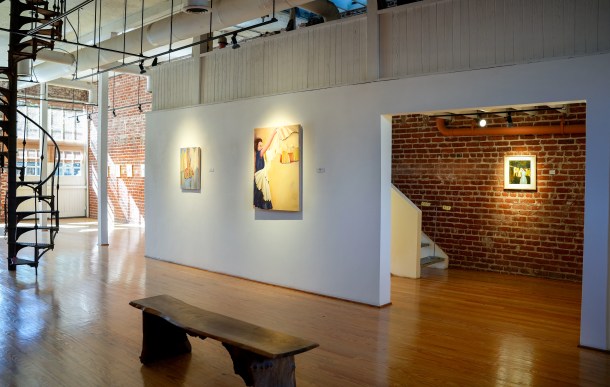
“There were galleries close enough together that people could go from one gallery to another. Maybe they had to get in their car to go further out, but it felt as if it was all part of one event,” Altschul said, adding that today people might visit a gallery to see a specific artist, rather than explore.
Still, Altschul is hopeful for the future of art galleries. “I do think that if you looked at trends over many years that you would see that art scenes go up and down. So I would believe that there is a resurgence that will happen,” she said.
To Altschul’s point, several well-known Sacramento art spaces — like Midtown’s Kennedy Gallery, Jay Jay in East Sacramento and the Brickhouse Gallery in Oak Park — have shuttered their doors in the last few years. This is not just a Sacramento problem, even creative meccas like San Francisco, LA and New York have struggled to keep the art market afloat in recent years, losing both galleries and art museums.
These widespread challenges align with broader shifts in the global art market. According to Art Basel and UBS’ latest report, the global art market saw a 12% decline in total sales last year. The report also noted, however, an increase in overall transaction volume and a rise in new and first-time art buyers among smaller art dealers. Art dealers reported that in-person art fairs were the market of choice for nearly a third of sales from new buyers. Globally and in Sacramento, people are still buying art, but are spending less, and many are seeking out direct connections with artists.
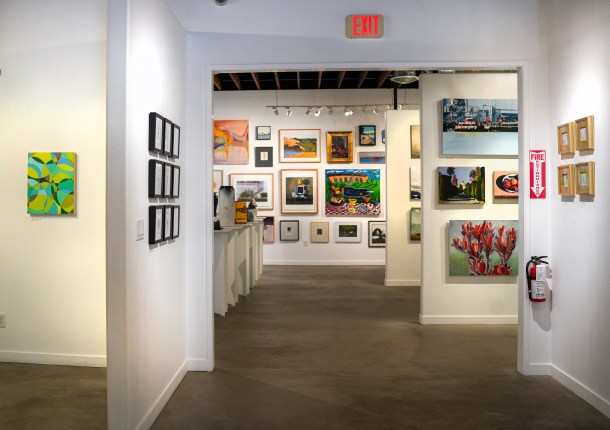
At Elliot Fouts Gallery in Midtown, a shift toward a more personal connection to art might account for recent success with one of their artists.
Recently, the gallery seems to have struck viral gold, amassing a cult following for funk ceramicist Jeff Nebeker’s colorful, lifelike ceramic donuts, cakes and other small sculptures. At around $100 a pop, these palm-sized sculptures are not only accessible but wildly popular, striking a chord with audiences through social media platforms TikTok and Instagram. With each new monthly donut drop, collectors from around the world log on and snatch up their favorites in seconds. The gallery declined to comment on financial information, but did not deny that Nebeker’s work sells.
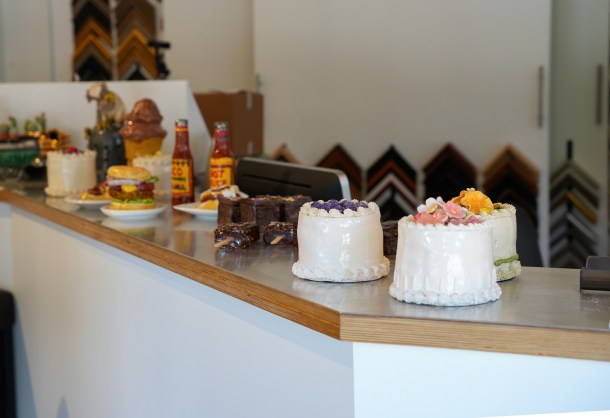
The gallery opened in 1999 and moved to its current Midtown location in 2012, with one of the largest spaces in the region at over 5,000 square feet. Boasting a collection including works by the holy trinity of Sacramento artists, the late Wayne Thiebaud, David Gilhooly and Gregory Kondos, the gallery has a long-standing reputation for housing high-quality art. Yet, without the use of social media platforms to connect to audiences and the gallery’s website to sell them, Nebeker’s adorable donuts might never have left his studio.
How artists sell their art
For Sacramento artists like Tim Collom, online sales just make sense. Collom owned a gallery in Midtown for seven years prior to the pandemic and still has a public gallery space at the Sacramento International Airport where he exhibits his popular folk art and California landscape paintings as well as curates exhibits by other artists. Leaving his Midtown gallery behind in 2020, Collum cited issues like overhead costs, decreased attendance and not enough other galleries in the area as barriers to success. As an artist, however, Collum has found continued success through online sales.
“I think that online and the internet have really changed the way people buy art,” Collum said.
Feeling that the commercial gallery scene in Sacramento doesn’t attract enough serious buyers, Natsoulas prefers to sell his art himself. Artists like Natsoulas are connecting with fans and collectors directly more and more. By turning to other avenues, Natsoulas has seen his profit increase, since he isn’t sharing commission with gallery owners, which can typically be anywhere from 30-50% of the sale price.
Younger artists like Jennifer Peart, who began her full-time artist career in 2022, look for opportunities such as art markets in addition to gallery exhibitions. Recently, Peart attended San Francisco’s legendary SuperFine Art Fair as a first-time vendor, where she sold about half of her paintings on wood panels and earned new collectors and followers. She also sells prints on her own website, and is constantly exhibiting her work, diversifying her opportunities to sell art.
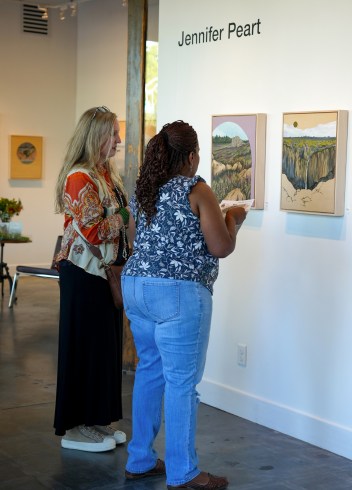
Peart’s latest solo exhibition “State of Change: Visions of California,” is currently on display at janeGallery, which opened in October 2024. The gallery, owned by Sacramento native artist Jane Mikacich and her brother John Mikacich, was once used as an office and storage for the neighboring restaurant, Limelight Bar & Cafe, which the Mikacich family has owned since 1975.
During the pandemic, Mikacich transformed the front windows of an overflow office and storage space next door into a socially distant exhibition space for her and her friends’ art, leading to the formation of the Sacramento Arts Collective. Today, the 750-square-foot space operates as one of Sacramento’s newest commercial galleries. The gallery recently hosted a solo exhibition for local painter Bud Gordon, who has exhibited work throughout the region since the 1970s and studied under Wayne Thiebaud at UC Davis. A small rear gallery showcases a collection of work by established artists like watercolorist Jerry Silva alongside newer talents such as Peart and painter Caiti Chan (who is scheduled for a solo show at janeGallery in August).
In 2023, another commercial gallery entered the scene. Timeless Thrills, which began as a clothing and apparel brand in 2011, transitioned into a dedicated art gallery after a handful of years hosting art events.
According to owner Tyler Wichmann, the gallery, which highlights the work of contemporary tattoo artists, photographers and ceramicists, “is thriving.” Wichmann reported that during the opening reception for their most recent exhibition, “Until the End” — featuring paintings by tattoo artists Eiland Hogan and Ian Carder — over 80% of the art was sold.
So is the old model broken? Maybe. Maybe not. The traditional art gallery hasn’t disappeared, but artists in Sacramento seem to be seeking out alternative approaches to connect with buyers and create a sustainable art business.
Alternative art spaces
Galleries like the Artists’ Collaborative Gallery in Old Sacramento and Axis Gallery at Verge Center for the Arts in Southside Park are run by artists, often splitting the overhead costs by sharing rent and having members take turns staffing the gallery. These spaces seek to connect artists with opportunities while also empowering artists with more creative choices and ownership in marketing their own work.
Some, like the newly opened Prism Art Space on K Street in Midtown, serve as both studios and community spaces. Prism, which had its opening reception on May 3, is operated by nine studio artists, including printmaker and curator Jazel Muñoz, Sacramento Arts Culture and Creative Economy commissioner Justina Martino and interdisciplinary artist Michael LaHood. The gallery’s social media describes it as a space “built to nurture experimentation, collaboration and accessible exhibitions that invite the public in.”
Other alternative spaces are incorporated into existing businesses, like WAL Public Market Gallery located on the ground floor of the Warehouse Artist Lofts building, or the Grounded gallery, located in the first floor space of the Grounded real estate agency building.
The Gallery By We Are Sacramento, sometimes referred to by its Instagram handle, “the Gallery 916”, was started six years ago by a coalition of five business owners and creatives in Sacramento. We Are Sacramento started as a podcast interviewing people “who make Sacramento go around,” according to COO Mari Padilla. Eventually the space outside of the podcast studio became a location for pop-up events and makeshift galleries.
Realizing that there were not a lot of opportunities for artists to showcase their art in gallery spaces, they began to open up their tiny podcast studio for artists to have solo shows. When an opportunity arose to open a gallery space on Del Paso Boulevard in the summer of 2023, the group took a chance and has been hosting and selling local artists’ work ever since, prioritizing an inclusive and accessible space, particularly for artists of color.
“We’re totally wanting to bridge the gap between the traditional art galleries and our Sacramento culture,” Padilla said, adding that the gallery brings in a diverse mix of buyers and art supporters who love to support local artists.
While a for-profit business, the gallery takes zero of the profits from art sales, instead supporting itself through space rental and fees for events like workshops and live performances. By being aligned with values of giving back to the community, the business is able to sustain itself, according to Padilla, who sees the shift to more community art spaces as a good thing.
“I love the thought of the creatives creating their own rules and the way that art galleries operate. … I think that it’s an amazing thing to see that we are all kind of just stepping up and making the changes that we know that are needed because we can’t do it alone,” Padilla said.
The challenges within Sacramento’s art market reflect broader trends impacting the art world everywhere, but through a blend of traditional, innovative and collaborative approaches, the capital’s creatives and gallerists are forging a new path to sustainable success.
This story is part of the Solving Sacramento journalism collaborative. This story was funded by the City of Sacramento’s Arts and Creative Economy Journalism Grant to Solving Sacramento. Following our journalism code of ethics, the city had no editorial influence over this story. Our partners include California Groundbreakers, Capital Public Radio, Outword, Russian America Media, Sacramento Business Journal, Sacramento News & Review, Sacramento Observer and Univision 19. Sign up for our “Sac Art Pulse” newsletter here.
This post was originally published on this site be sure to check out more of their content




